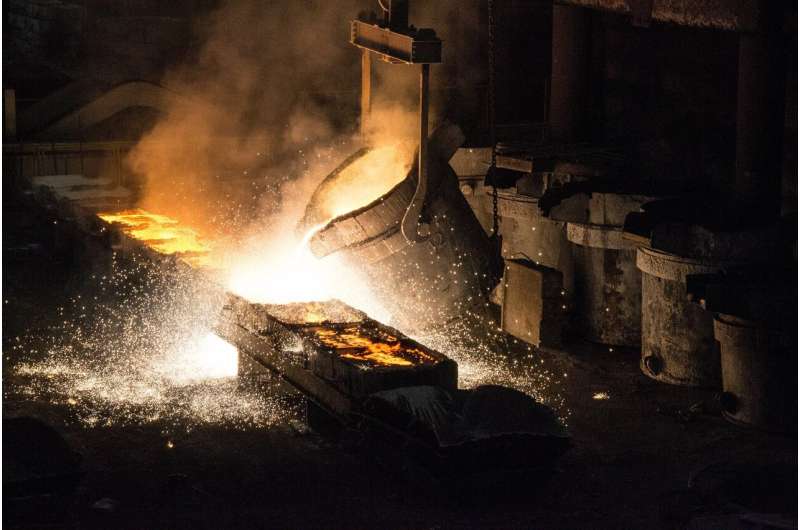Using machine learning to find an optimal mixture of metals to create a desired alloy

A large team of researchers at the Max-Planck-Institut für Eisenforschung GmbH, working with colleagues from Technische Universität Darmstadt, Delft University of Technology and KTH Royal Institute of Technology, has found that it is possible to use machine learning to help metallurgists find the optimal mixture of metals to create a desired alloy. In their paper published in the journal Science, the group describes their three-step process and how well it worked when tested. Qing-Miao Hu and Rui Yang with the Chinese Academy of Sciences, Institute of Metal Research, have published a Perspectives piece in the same journal issue outlining the work done by the team on this new effort.
Humans have been mixing metals to suit their needs for thousands of years, and in so doing have learned a lot about creating alloys. But finding just the right mix has always involved some degree of inspiration, patience and chance. So most alloys have been created by starting with one main metal, such as iron, and adding small amounts of other metals to see what characteristics resulted.
Over the past few decades, things have begun to change, however—some researchers have begun making alloys that have equal parts of several metals. Creating such alloys with desired features is, of course, much more challenging. In this new effort, the researchers applied machine learning to help with the process. They began by reducing the test space to just one application—creating alloys that do not expand and contract very much when exposed to temperature changes.
To create a machine-learning application, the researchers looked for and found characteristics of metals that could be used for comparison purposes and then taught their system using information in currently available databases. In so doing, they developed a process for finding an alloy that would suit a desired purpose.
The process by the team was narrowed down to three basic steps: First, they generated new mixtures using models based on information held in the database describing metal characteristics. Next, they used a second model to help predict the properties of certain alloys they created using the first step. The final step involved studying the alloy candidates produced by the system and choosing some to test in the real world.
Using their system, the researchers derived 1,000 candidates which were narrowed down to just three alloys. They then created the three alloys using the mix described by their system and tested their physical properties. The team then trained the system on data derived from the real alloys and repeated the whole process. In all, they ran it seven times and found an alloy with a smaller thermal coefficient than the current record.
Ziyuan Rao et al, Machine learning–enabled high-entropy alloy discovery, Science (2022). DOI: 10.1126/science.abo4940
Qing-Miao Hu et al, The endless search for better alloys, Science (2022). DOI: 10.1126/science.ade5503
© 2022 Science X Network
Citation:
Using machine learning to find an optimal mixture of metals to create a desired alloy (2022, October 7)
retrieved 7 October 2022
from https://techxplore.com/news/2022-10-machine-optimal-mixture-metals-desired.html
This document is subject to copyright. Apart from any fair dealing for the purpose of private study or research, no
part may be reproduced without the written permission. The content is provided for information purposes only.
For all the latest Technology News Click Here
For the latest news and updates, follow us on Google News.
